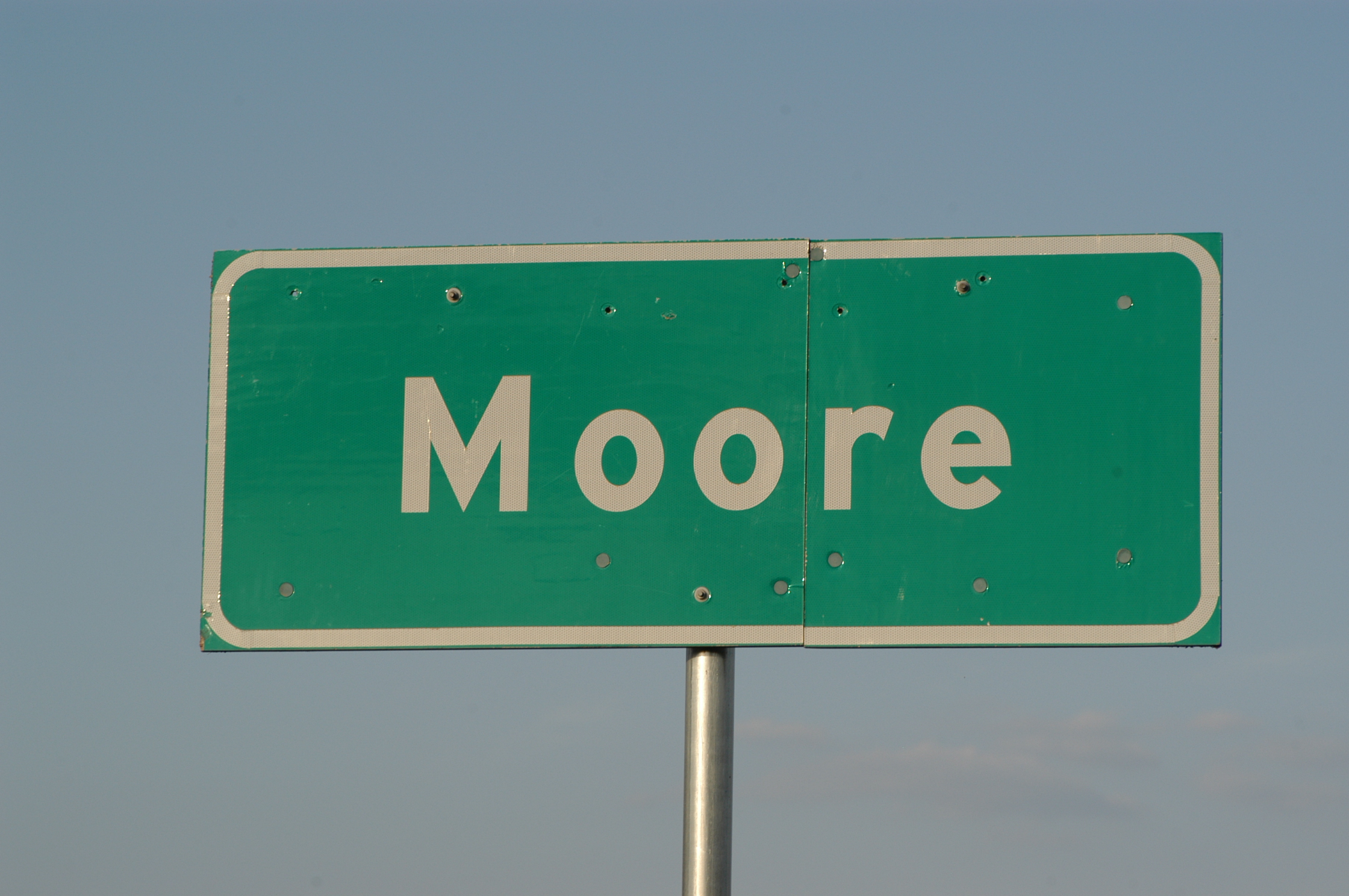

| Anthony Bollman | U.S. History 1302, Spring, 2006 |
| Kimberly Crouch | R. Hines, Instructor |
Moore is a small town located in Frio County, Texas. The town has a total population of 644 residents as of the census in 2000. according to the census of 2000, the percentage of people living in Moore are, White 41.46 percent, Hispanics 46.27 percent, African American 0.47 percent, Native American 1.40 percent, Pacific Islander 0.31 percent, and 10.09 percent from other races. As far as income in Moore, the median income for a household was $39,063. Males had a median income of $24,531 versus $28,281 for females. In Moore, 15.4 percent of the population and 9.9 percent of families are below the poverty line. (Wikipeda.com)
Here is an aerial photo of Moore, as you can see Interstate 35 runs right through the center of the town.
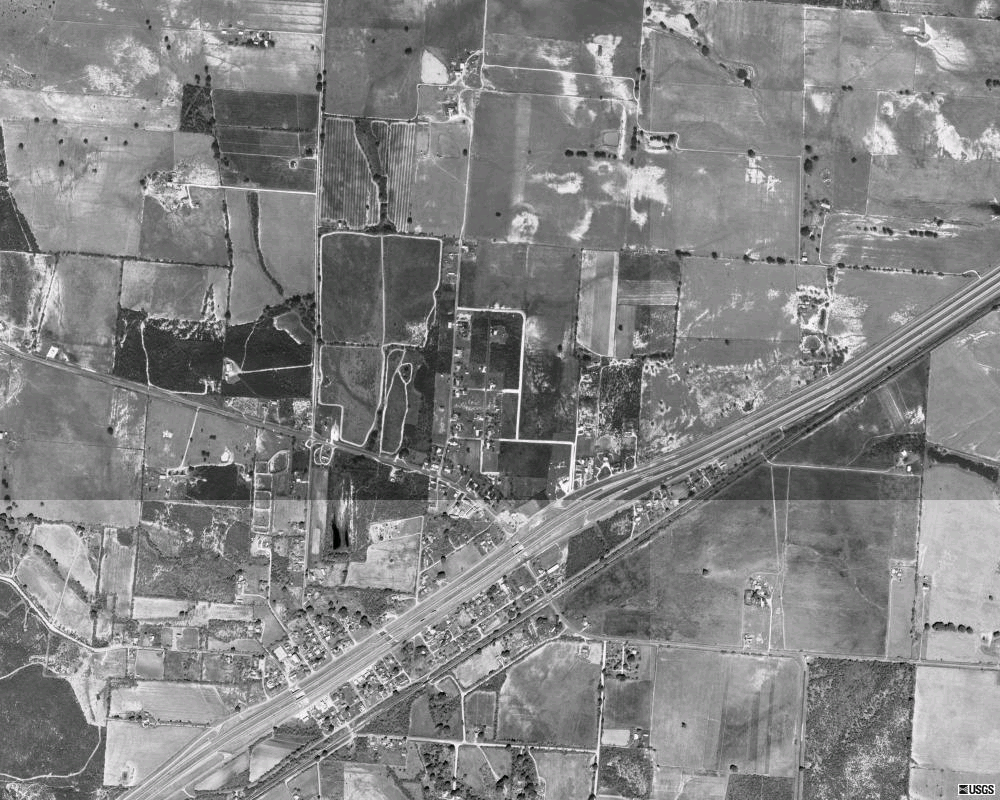
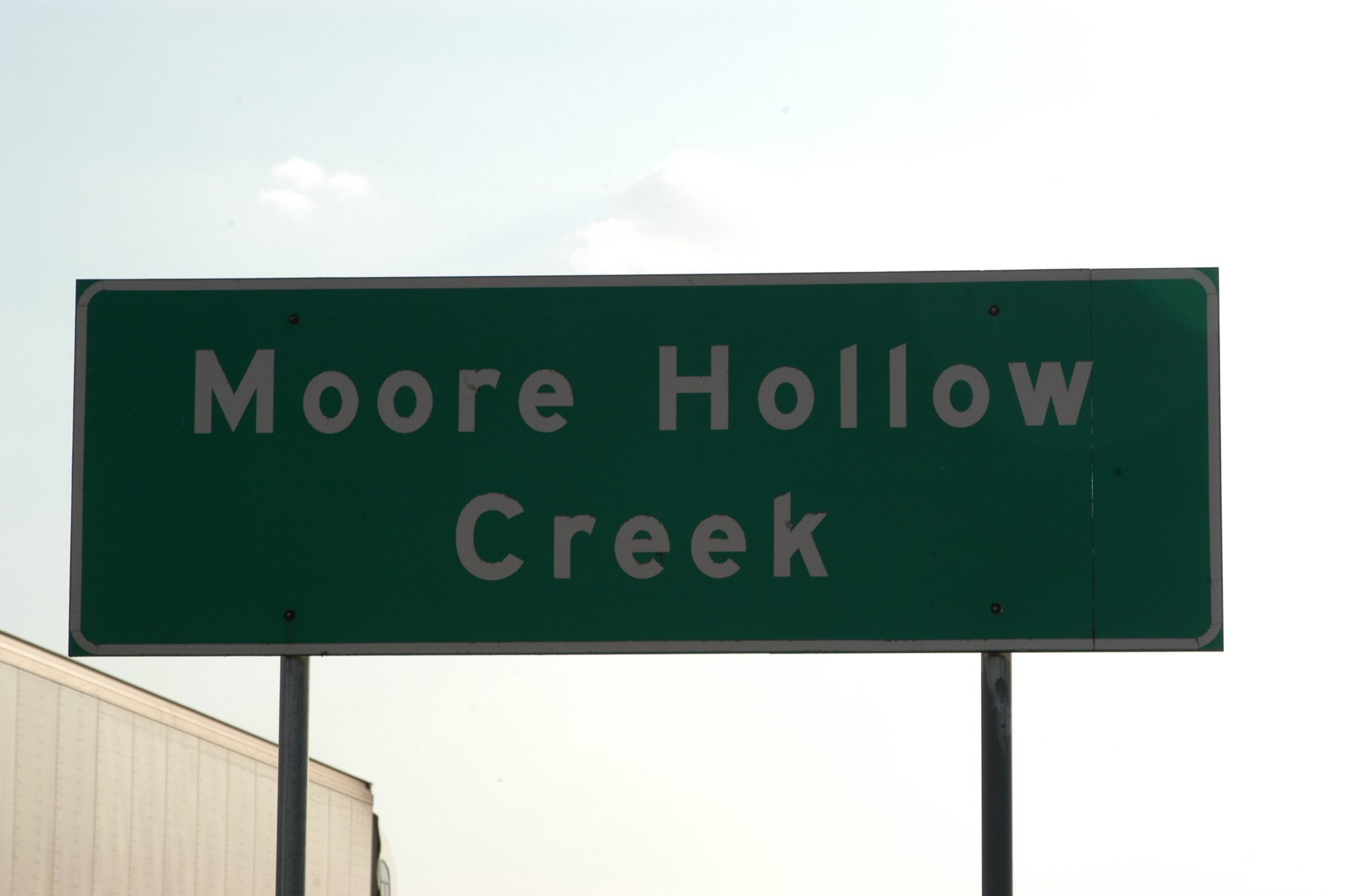
FOUNDING FATHERS AND MOTHERS:
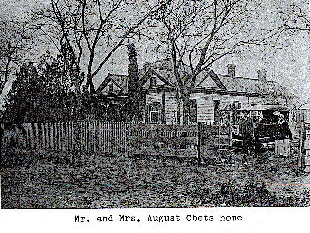 August Obets came to the United States from Germany with his parents, two brothers, and two sisters in 1854, at which time he was five years old. The family settled on the Sabine River and later moved to San Antonio. From San Antonio the family moved to the San Miguel Creek between Devine and Bigfoot. He married Miss Louisa Rihn of Castroville September 16, 1870. Louisa was born in 1855 and died in 1933. Obets settled on a track of land that later became the town of Moore. As a young man Obets worked with Captain Willia 'Big Foot' Wallace protecting his horses from outlaws, Indians, and thieves who raided the settlements. He later helped build the first railroad through Southwest Texas and was engaged in stock raising and farming during the remainder of his life. August Obets died at his home in Moore on Tuesday, November 13, 1934 at the age of 80. He was then buried at the Catholic cemetery in Moore. His home was torn down when the Interstate highway 35 right of way was purchased. As you can see in the photos below, the birth and death date are different that what is given above, but this is the grave site of the same man. (Sketch pg85)
August Obets came to the United States from Germany with his parents, two brothers, and two sisters in 1854, at which time he was five years old. The family settled on the Sabine River and later moved to San Antonio. From San Antonio the family moved to the San Miguel Creek between Devine and Bigfoot. He married Miss Louisa Rihn of Castroville September 16, 1870. Louisa was born in 1855 and died in 1933. Obets settled on a track of land that later became the town of Moore. As a young man Obets worked with Captain Willia 'Big Foot' Wallace protecting his horses from outlaws, Indians, and thieves who raided the settlements. He later helped build the first railroad through Southwest Texas and was engaged in stock raising and farming during the remainder of his life. August Obets died at his home in Moore on Tuesday, November 13, 1934 at the age of 80. He was then buried at the Catholic cemetery in Moore. His home was torn down when the Interstate highway 35 right of way was purchased. As you can see in the photos below, the birth and death date are different that what is given above, but this is the grave site of the same man. (Sketch pg85)
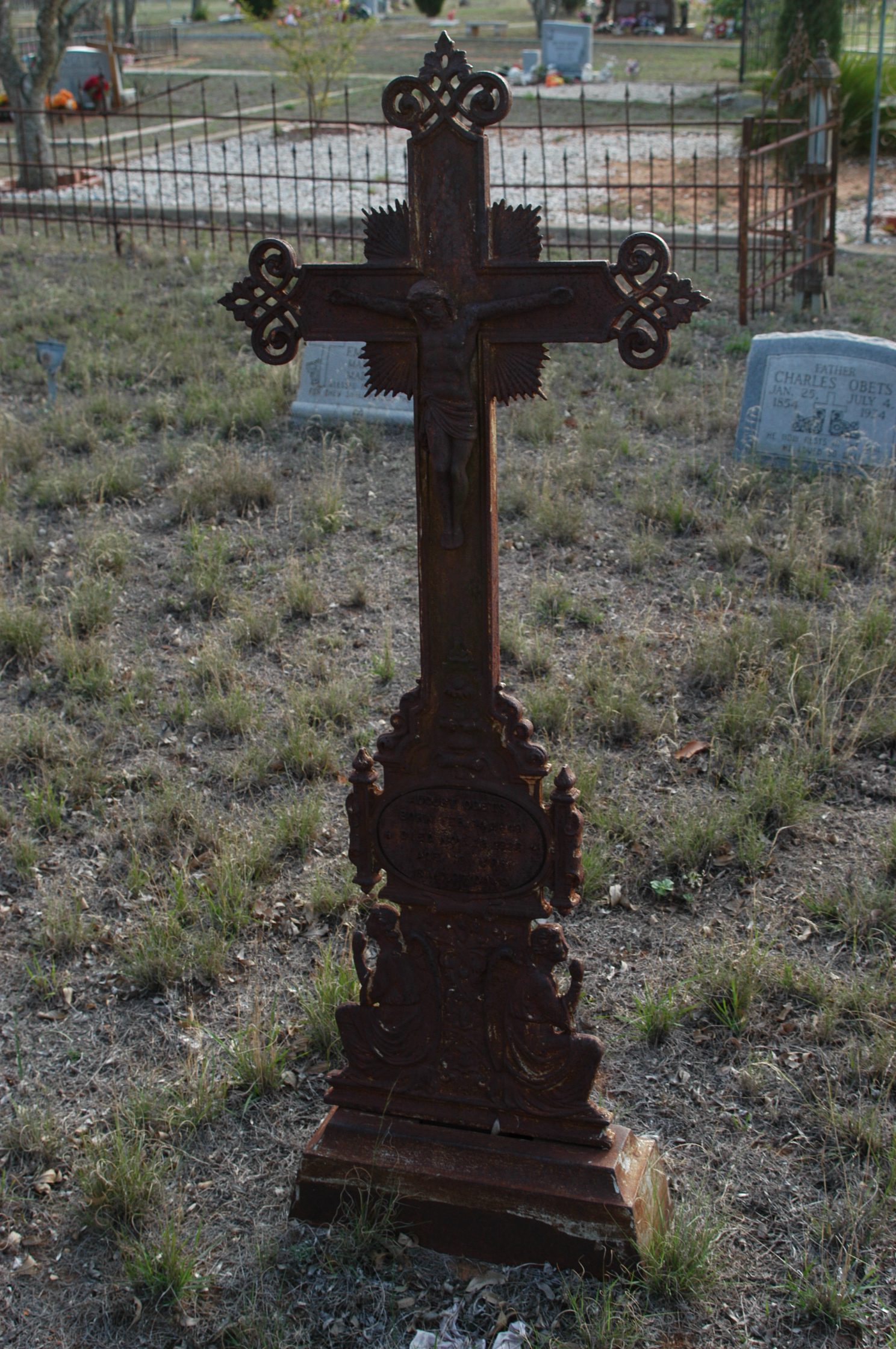
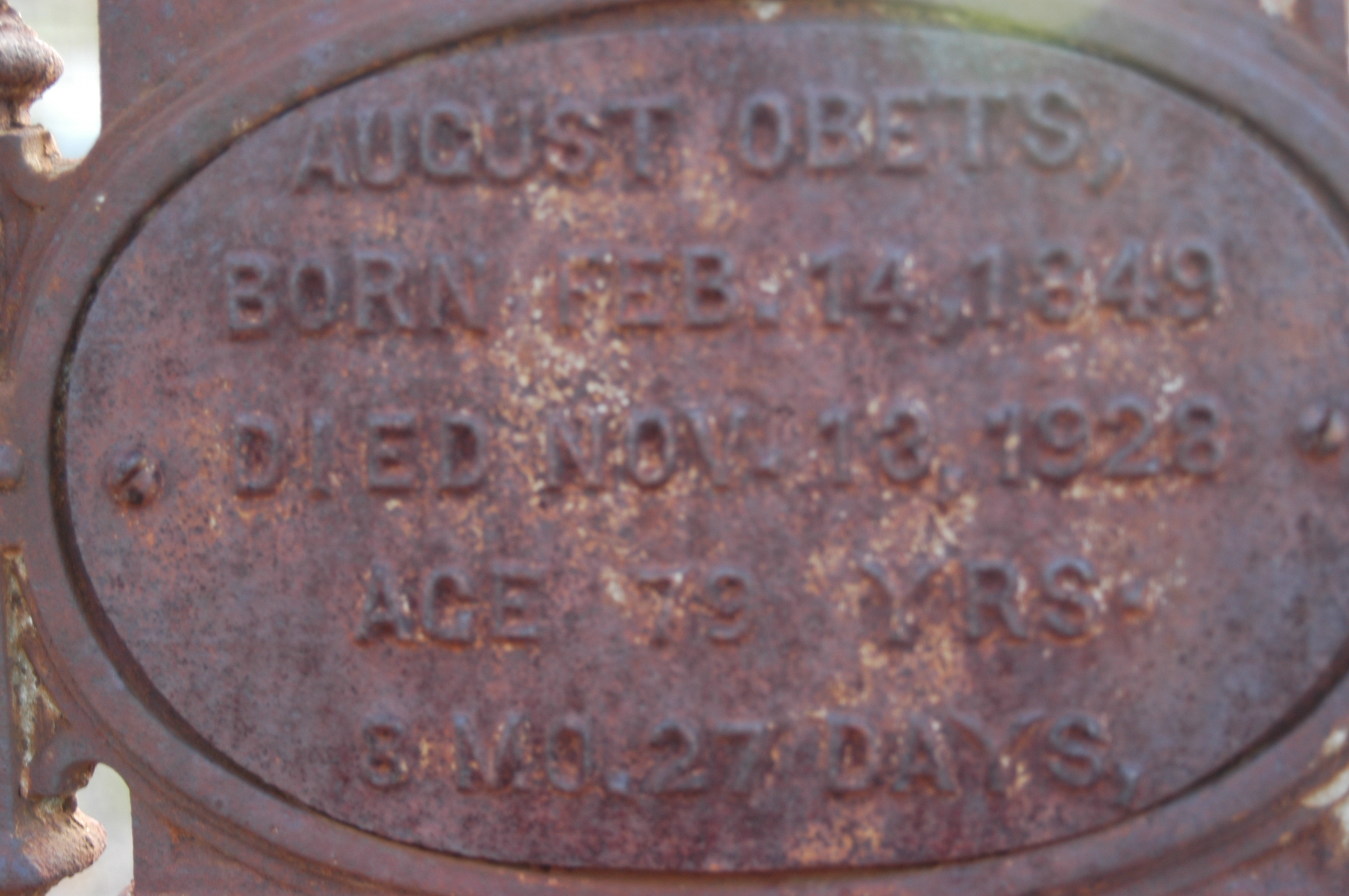
ECONOMY:Moore did actually have a national bank at one point in time. Moore National Bank was established in 1902. The president of the bank was H. E. Johnson. Mrs. Claudia Oliver has a bill that was issued by the Moore National bank. On the face of this bill are the names of L. D. Johnson, cashier, and R. L. Connelly, president. The date that bill was issued is June 18, 1907, which is printed directly on it. Both of the employees printed on the bill served until the bank was merged with the bank at Pearsall, Texas in 1933. J. Otis Jones , a resident of Moore, was employed to liquidate the assets of the bank. It took him several years but, he reported that every stockholder was paid in full. (Sketch pg11)
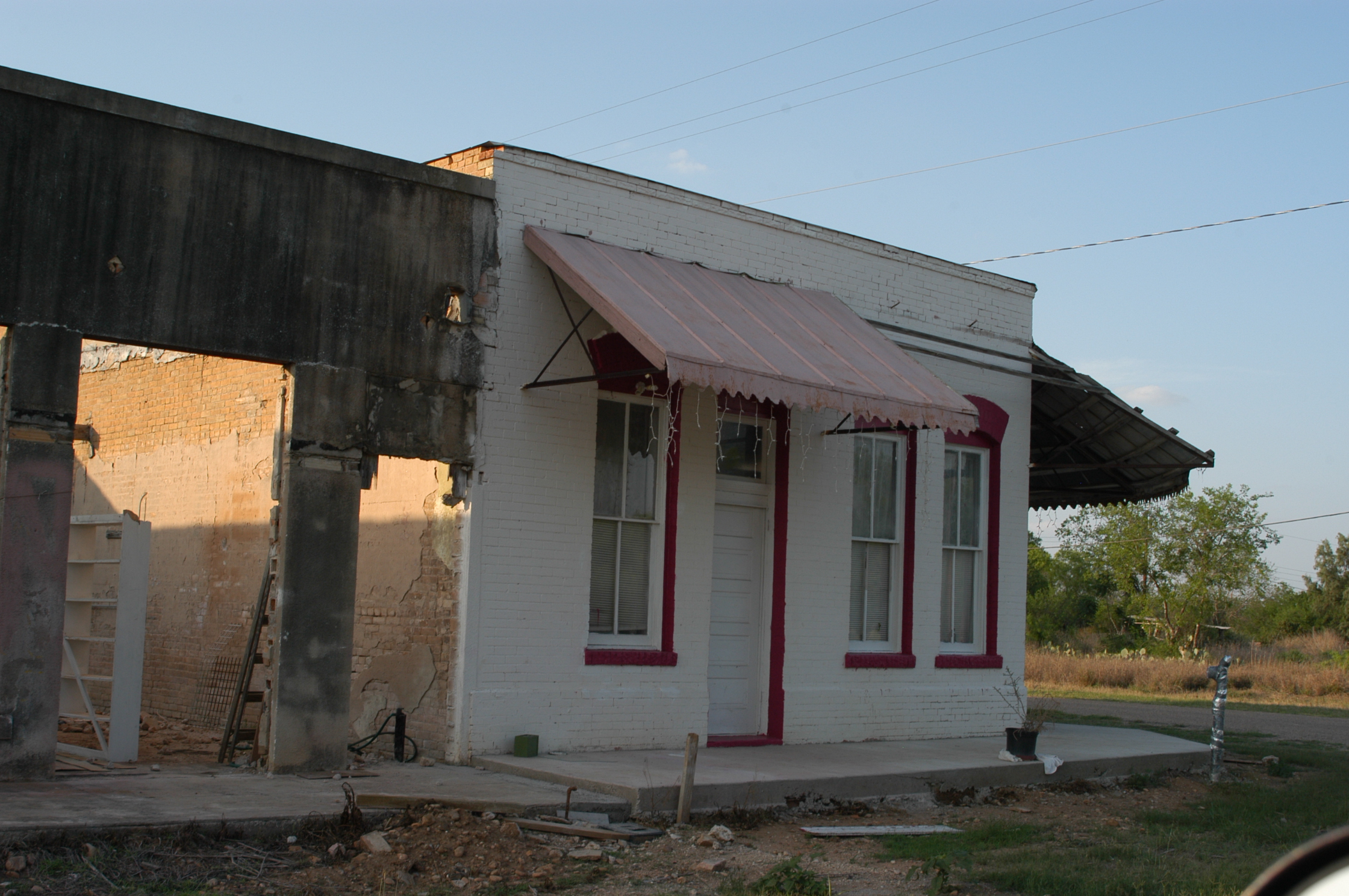
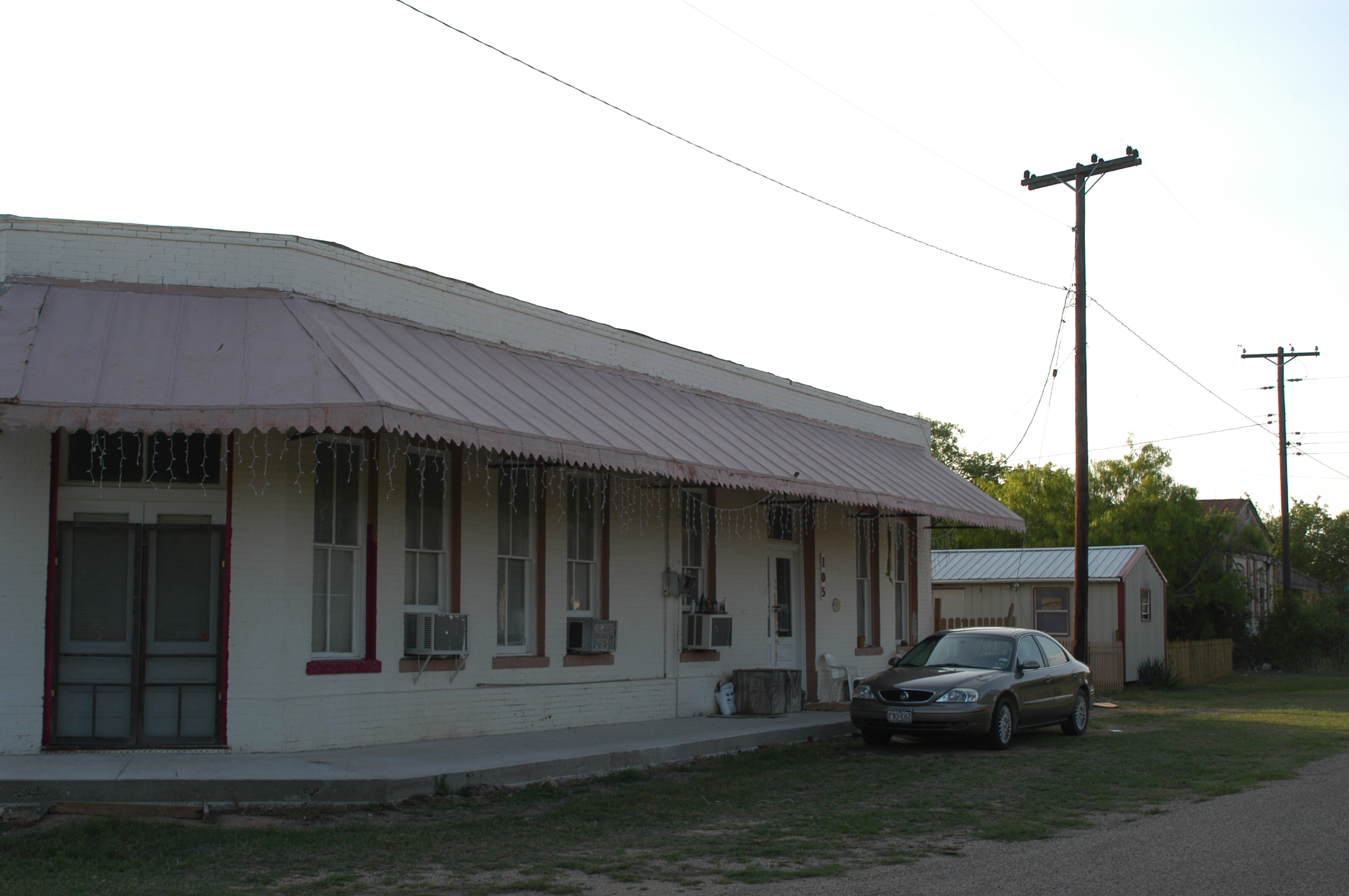

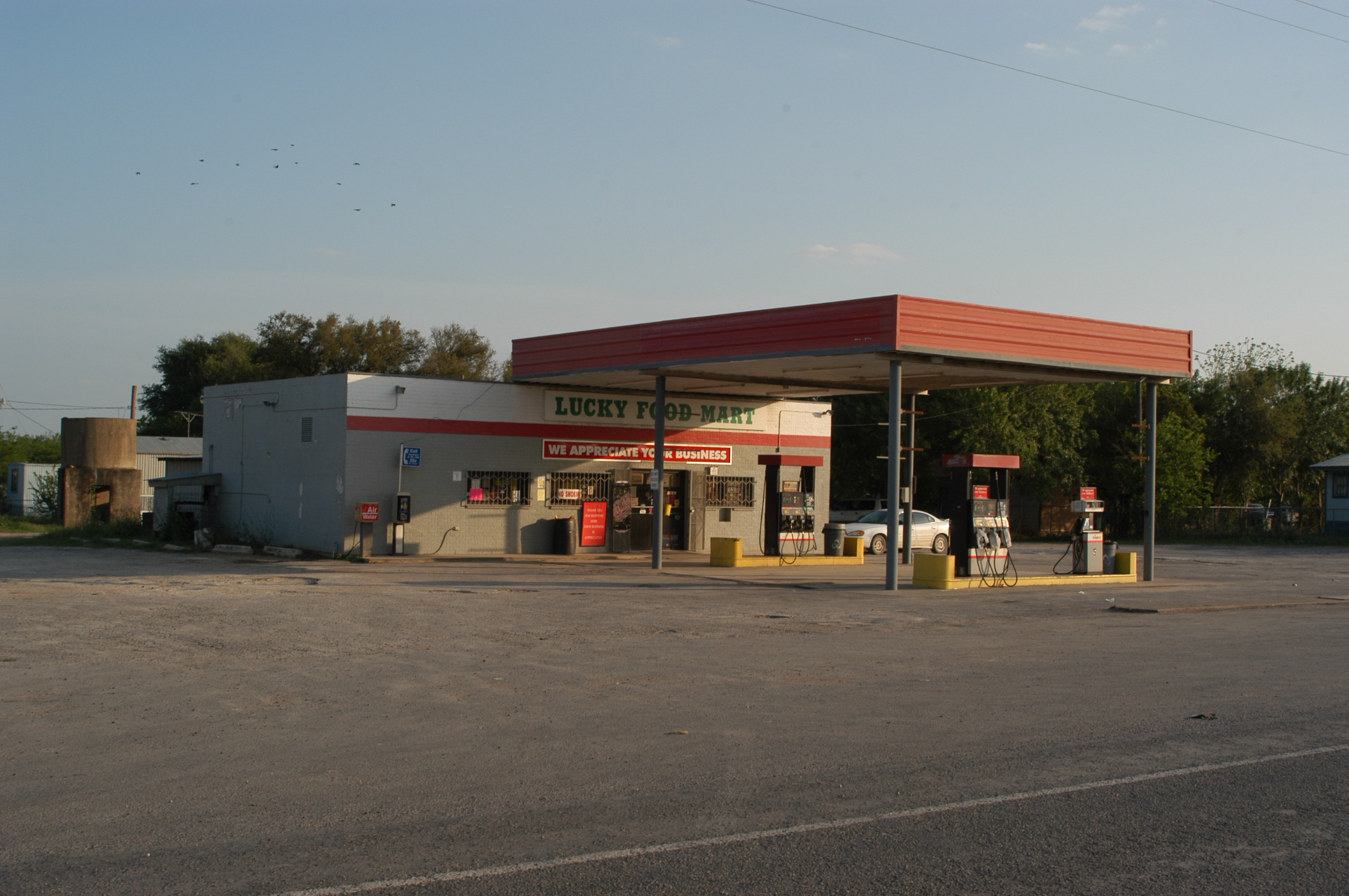
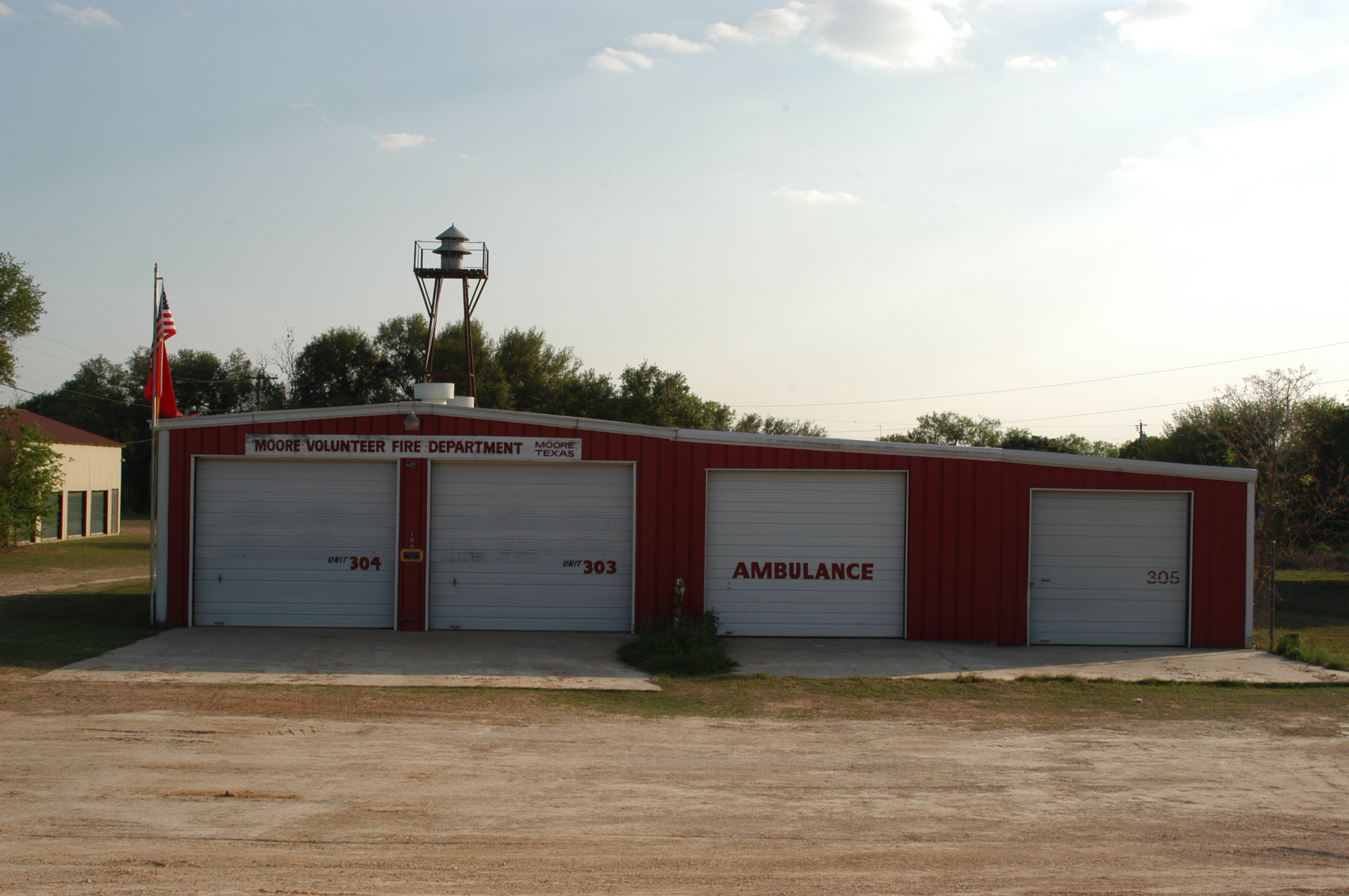
HISTORICALLY SIGNIFICANT STORIES:In early 1900s, the weekly newspaper, The Moore Model, was established. Some give 1904 as the year of it’s beginning period. From Mrs. Ben Young’s “Historical Memoirs of Moore” published in the Pearsall Leader of Pearsall in February, 1969, it is ascertained that H. E. Johnson owned the paper. Dan Huffer was the first editor, but soon quit to begin work for the Devine News. Ben Young, who was working on Mr. Johnson’s ranch, became the new editor. The Moore Model was published through 1912 by setting typed by hand on old-fashioned George Washington printing press. In an issue published in 1910, H.E. Johnson, who had the agency in at Moore in Pearsall, had a half page advertisement of Cadillac’s. His was the first car owned by a Moore resident. In 1916, the subscription to the paper was a buck a year. (Sketch pg11)
HISTORICAL LANDMARKS: The original post office was established as Moore’s Station on June 8, 1882. (Sketch pg.17)
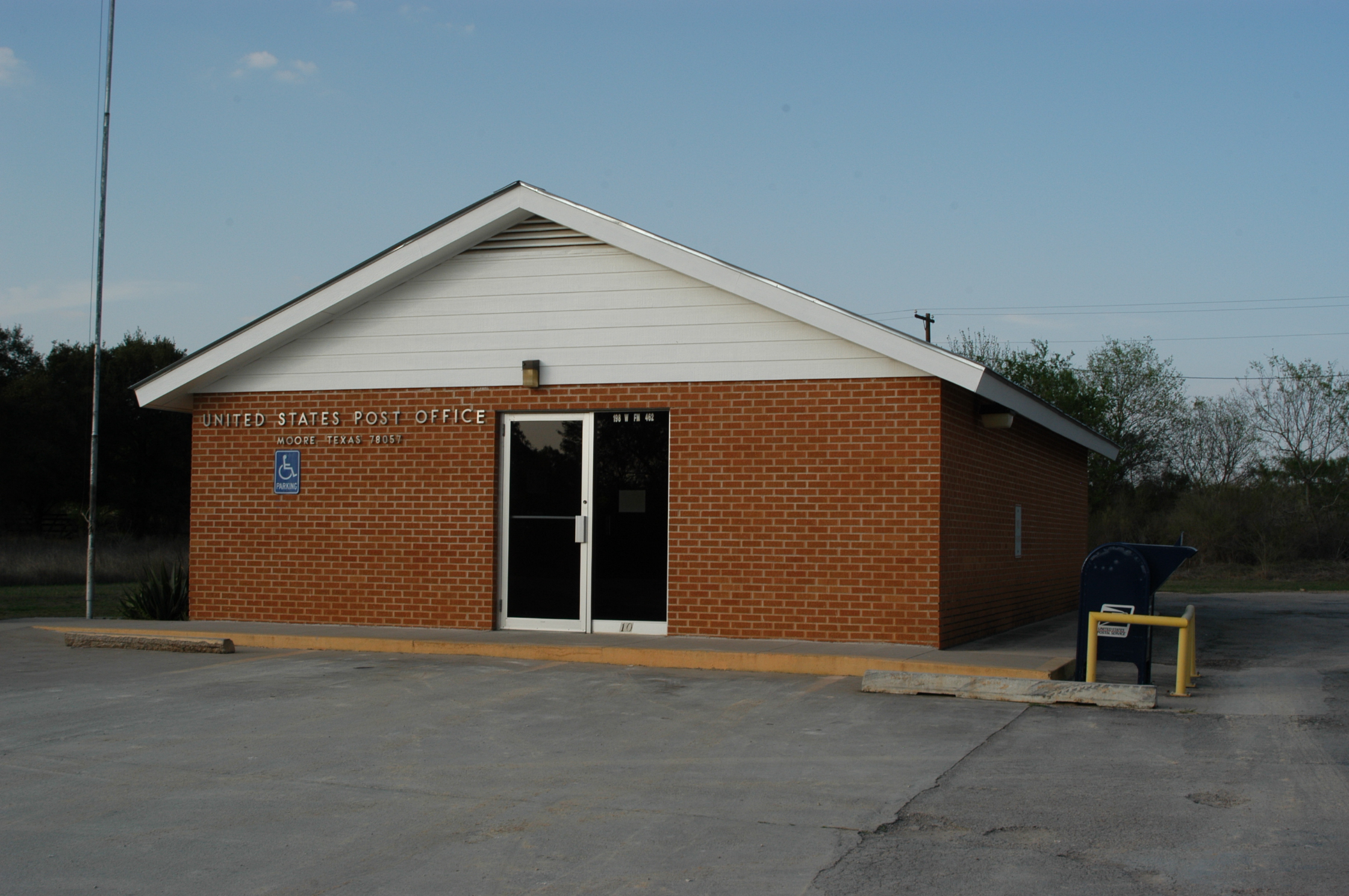
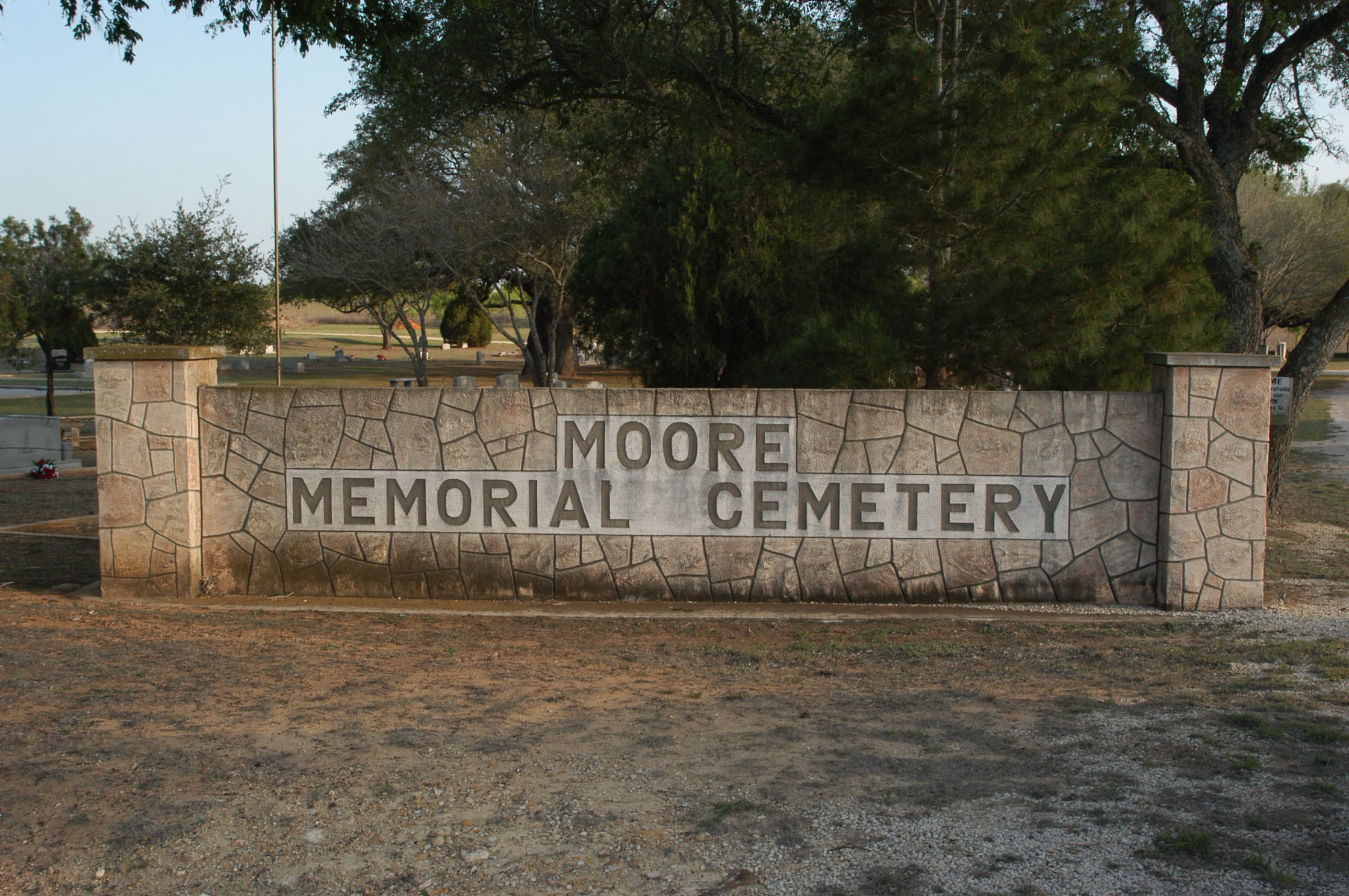

Moore has two cemeteries, both of which date back to the early 1890’s. The first of which is the Moore Memorial Cemetery, which is pictured above. According to one of the residents of Moore, William “Tun” Winters gave four acres of land for the Moore Cemetery, but in volume X, page 173 of the deed records this tract of land is approximately five acres, and was deeded to Moses Veith. The deed for the cemetery is dated August 25, 1896. Many pioneers, veterans from Indian fights, Civil War, World Wars I & II, and also the Vietnam War are buried here. A historical marker was dedicated on July 26, 1970. Mrs. Lula Harrison, a resident of Moore and descendent of the man who, in the story told by the resident, donated the land, unveiled the marker.(Sketch pg.124)
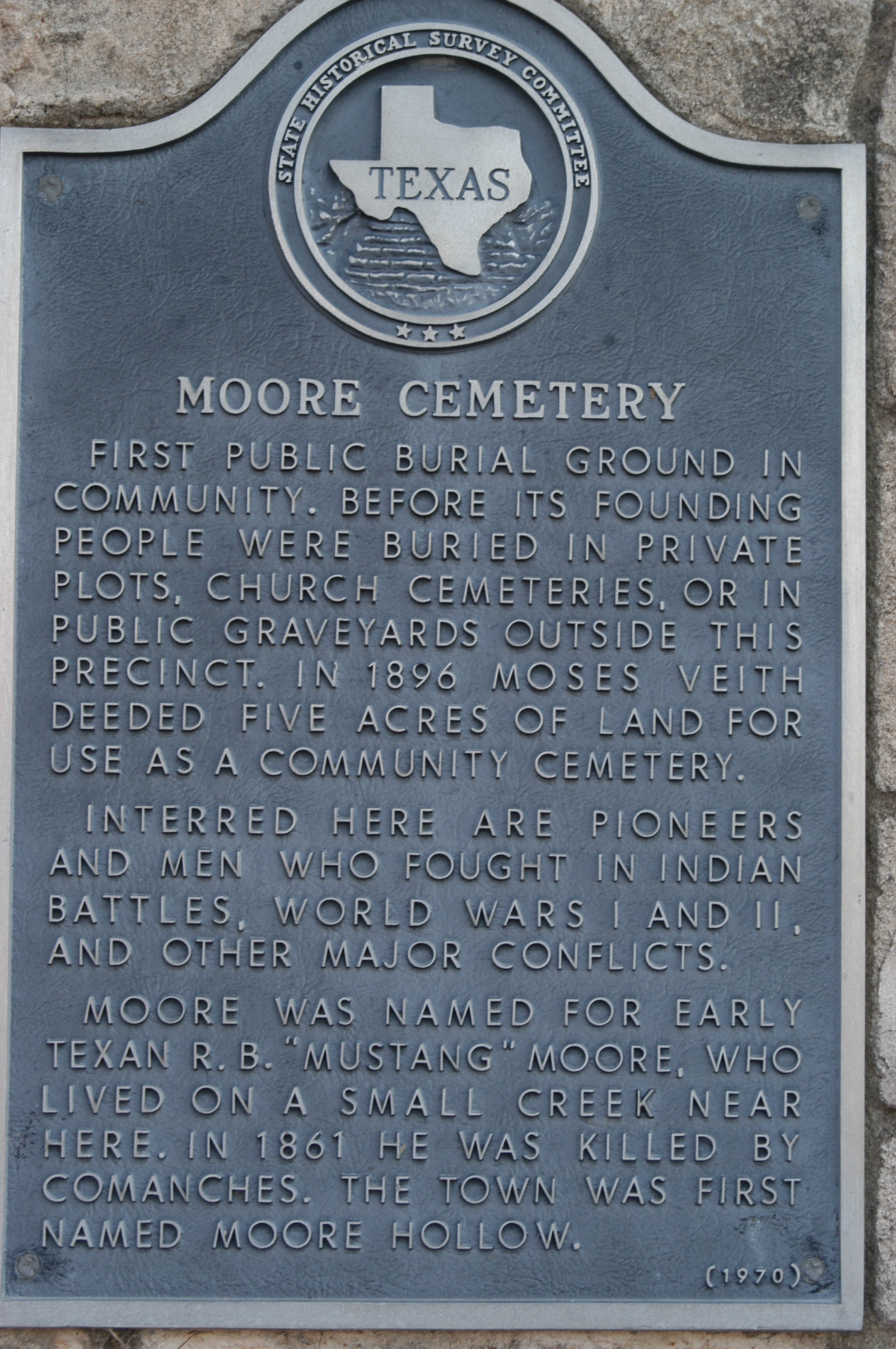
Land for a Mexican cemetery was given by Ben Duncan in the year 1902. This cemetery later was named the Catholic Cemetery but most of the older graves are that of Hispanics. Some were buried here before the land was given. The oldest legible grave stone is that of Christine Tehas, born in 1819 and died in 1894.
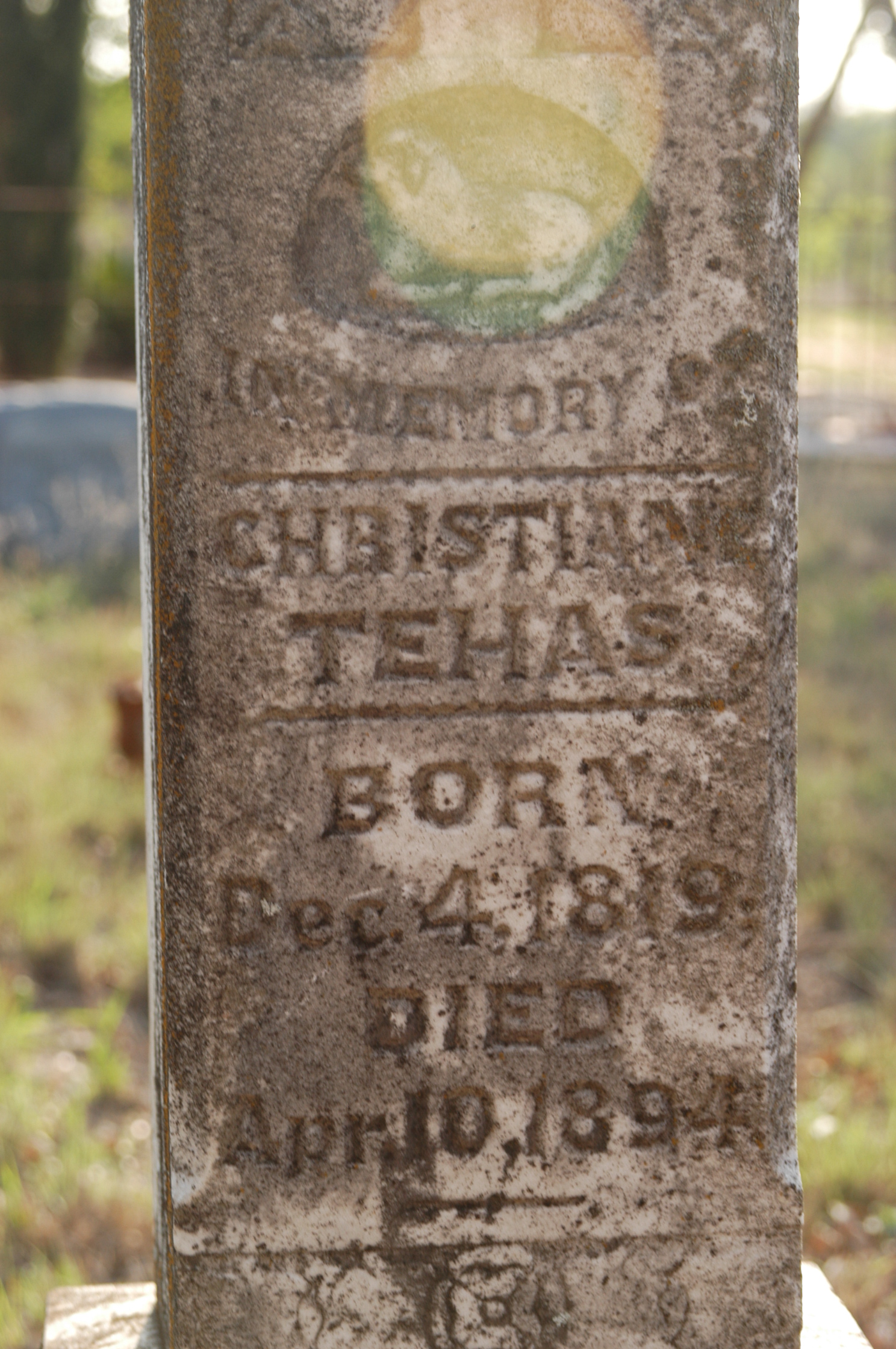
This cemetery was also given a historical marker which is pictured below. (Sketch pg.124)
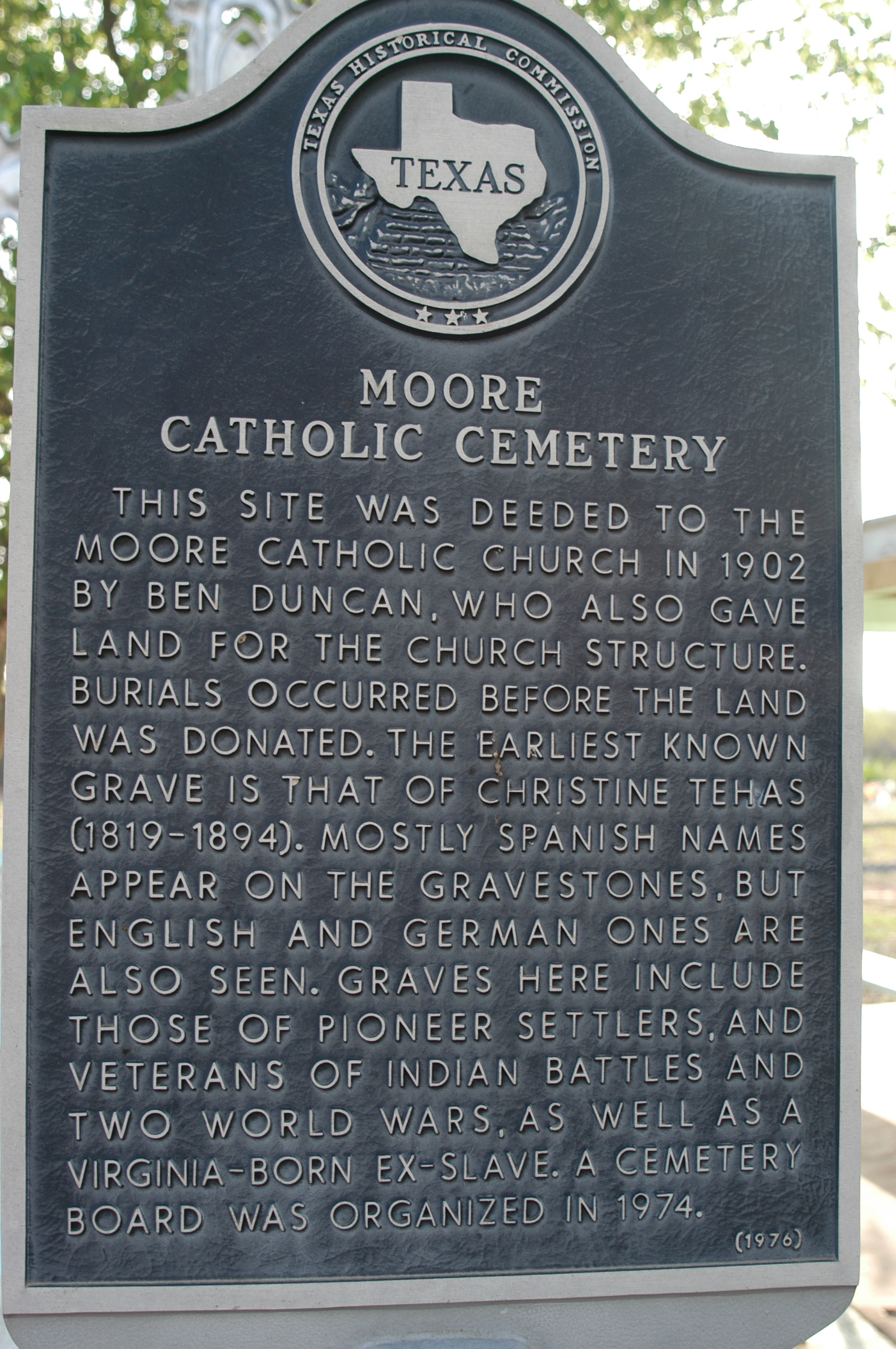
As for a school system, Moore had three school buildings. The first school building was constructed some time in 1881 or 1882. A J.A.B. Harkness was paid $100 for building it. In an odd twist, a big cotton crop was produced in 1903, and many Mexican cotton pickers were brought in. it was believed that they brought yellow fever, there were 11 or 12 deaths. Because of this the school was closed and not opened until the fall of 1904. In the year 1916 there were five graduates from the Moore school. (Sketch pg.37)
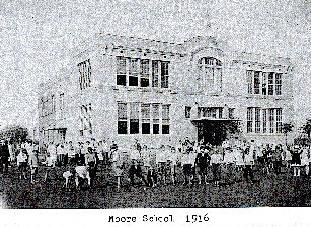
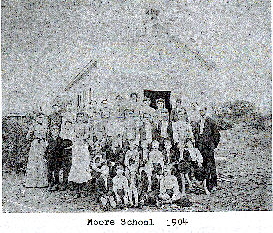
UNUSUAL EVENTS:Some of the old settlers told a story that has been passed down, that there was once a shoot out in Moore. John Tomerlin and Jim Speed shot it out in the streets of Moore in true pioneer fashion of the old west. Tomerlin walked away, and Speed was given a funeral as the story goes. From what I could find no one can remember what they were fighting about, just that they fought. (Sketch pg.126)

Another more comical story that was found on the Texas Handbook web page, and found in other parts of my research starts with a man who was, as the story is told, was a Yankee, got on a train in West Texas and traveled for days across the state. After several days, the conductor came through the coach and called out “Moore, Texas.” The Yankee cried, “that’s too damn much Texas for me”. He got off the train and hanged himself. (Texas Handbook)
CONNECTIONS TO COURSE THEMES: You can see a connection to the course themes of this class in the race of this town. While Moore as the rest of the country has evolved from the time of slavery and segregation, at one time Moore did have separate schools for the white and Mexican children. There is no mention of a black school in my research but in later records after the schools were combined they do list blacks in attendance, but the numbers are very few. Though no definite dates could be found, the Mexican school was first housed in the Jesus Rodriquez Dance Hall somewhere between 1913 and 1915. The Mexican School was eventually joined with the main school in the 1930’s.
FUTURE PROSPECTS:Moore itself has a good number of younger residents, but when these people graduate most do not stay in Moore. Out of the people that move to Moore every year, a large part of them are retirees or older. So the future of the town is kind of unknown, some think it will continue to grow gradually, but the growth of permanent residents will remain to be older people. (Interview)
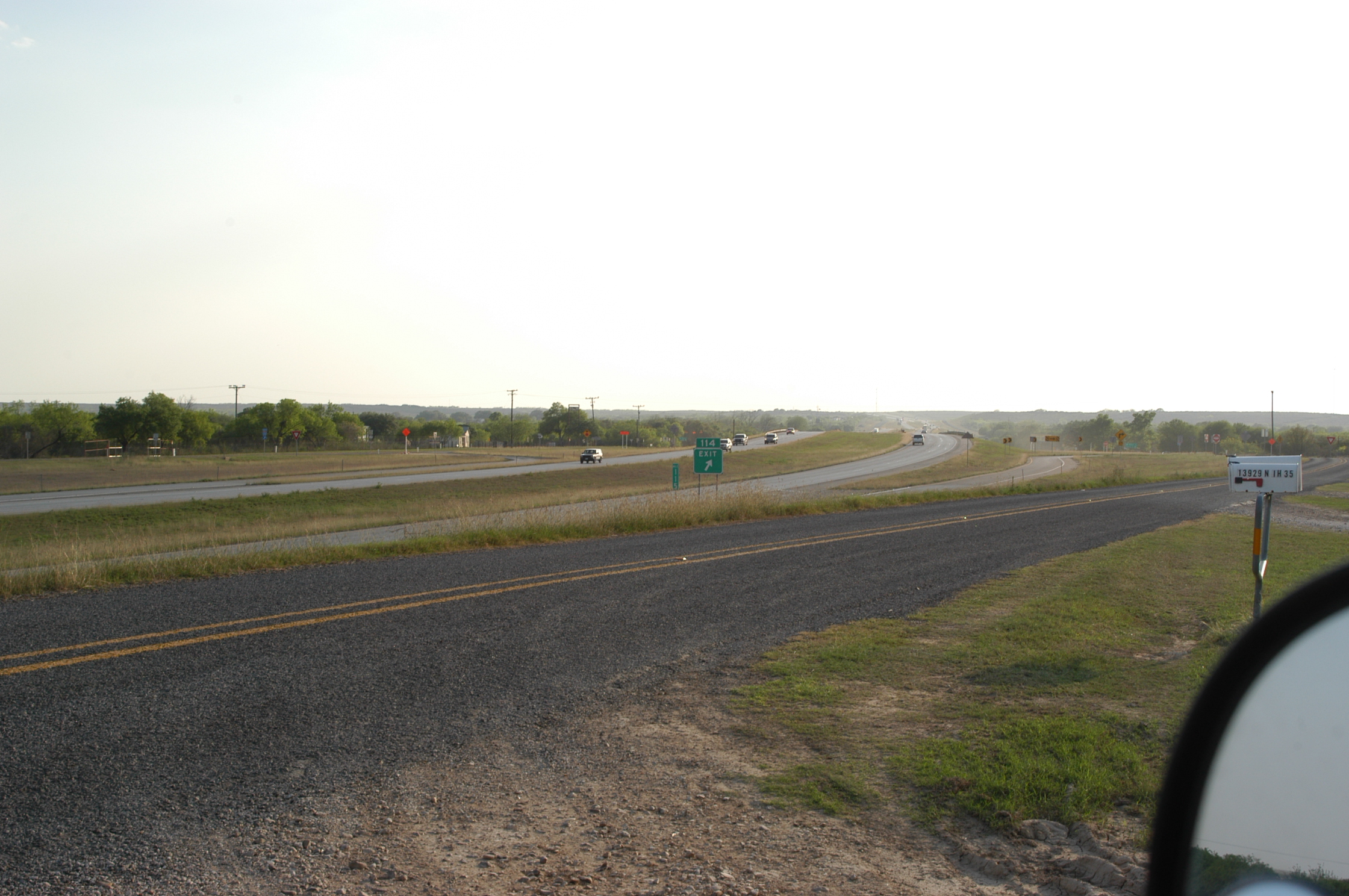 Moore,Texas
Moore,TexasInterview with Jim Prue and Richard Muzquiz
ANNOTATED BIBLIOGRAPHY:
Historical Sketch of Moore, Texas; Historical Committee: Mr. J. Otis Jones, Mrs. Ora C. Littleton, Mrs. T.E. Terry, and Mrs. J. E. Fargason - This book was extremely helpful to my research; it was written by the residents of Moore and covers everything from the start of the town until 1971. The bulk of my information was gathered from this and the next two sources.
The Texas Handbook Online – This site was very helpful with names and dates, but the dates in this site did seem to conflict with dates in other parts of my research.
Interview with Jim Prue and Richard Muzquiz – Jim and Richard were extremely helpful in my research. They were both very knowledgeable and eager to help. They made parts of this project enjoyable.
www.wikipeda.org – This site is a free online source, and has helpful information on just about anything you can think of. It was very good for making informative links for this research.
www.city-data.com - This site was ok. It gave good stats on the town of Moore, but that was about it.
Contact Info.
Anthony Bollman - abollman@mail.accd.edu